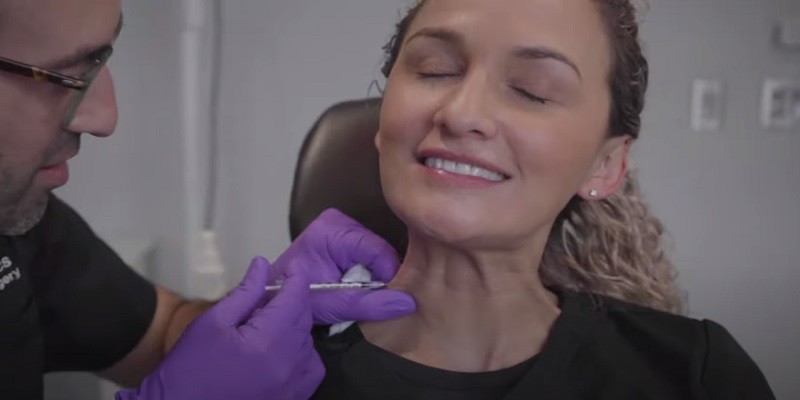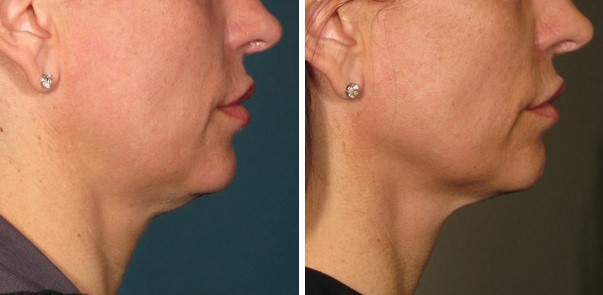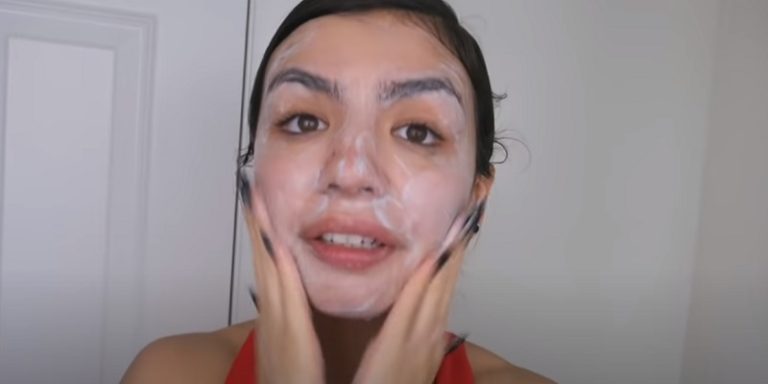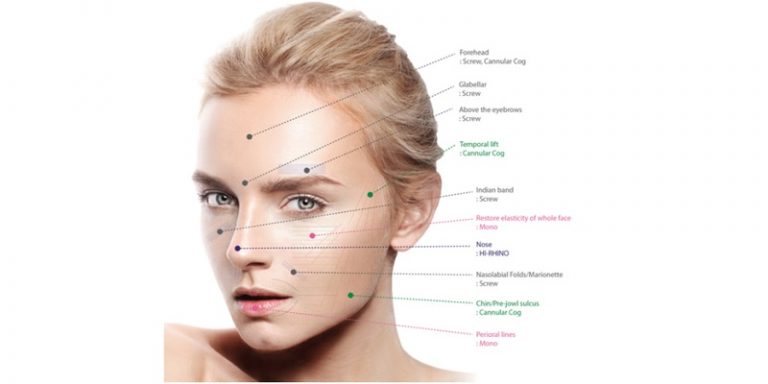Does Botox Work For Neck Sagging?

Last Updated on June 18, 2025 by Jaclyn A. Neeley
Botox is not effective for neck sagging, as it primarily targets muscle activity, not skin laxity. However, there are other nonsurgical options available that can help improve the appearance of a sagging neck.
These options include ultrasound therapy, radiofrequency treatments, and dermal fillers. Ultrasound therapy uses focused energy to stimulate collagen production and tighten the skin. Radiofrequency treatments work by heating the deeper layers of skin, promoting collagen production and tightening loose skin.
Dermal fillers, such as hyaluronic acid injections, can restore volume and improve the appearance of wrinkles in the neck area. It is important to consult with a qualified medical professional to determine the best treatment options for your specific needs.

Credit: www.mybotoxla.com
Neck Sagging
Neck sagging, also known as turkey neck or neck jowls, is a common cosmetic concern that can affect both men and women as they age. The skin on the neck tends to lose its elasticity over time, resulting in a sagging or drooping appearance. This can make individuals feel self-conscious and may affect their overall appearance and confidence. However, there are several factors that contribute to neck sagging, each playing a significant role in understanding this common issue.
Causes Of Neck Sagging
Neck sagging can stem from a variety of factors, including:
- Age: As we grow older, our skin naturally loses collagen and elastin, which leads to reduced skin elasticity. This decline in essential proteins contributes to neck sagging.
- Genetics: Some individuals may be predisposed to developing neck sagging due to their genetic makeup. If your family members have experienced turkey neck, you may be more prone to developing it as well.
- Sun exposure: Overexposure to the sun’s harmful UV rays accelerates the breakdown of collagen and elastin fibers in the skin. Therefore, inadequate sun protection can contribute to the development of neck sagging.
- Weight fluctuations: Significant weight loss or gain can affect the skin’s elasticity, including the neck area. Rapid weight loss, in particular, can leave behind excess skin that hangs and contributes to sagging.
- Posture: Poor posture, such as constantly looking down at screens or slouching, can weaken the muscles in the neck, leading to sagging over time.
Effect Of Neck Sagging On Appearance
The impact of neck sagging on an individual’s appearance can be significant. Not only can it make a person appear older than their actual age, but it can also create an imbalance in their facial features. Neck sagging can cause the jawline to become less defined and contribute to the formation of double chins. Additionally, many individuals experience a decrease in self-confidence as a result of their sagging neck, which can affect their overall well-being and interpersonal relationships.
Understanding the causes and effects of neck sagging is crucial in exploring potential solutions. One popular method that individuals consider is Botox. But does Botox work effectively for neck sagging? Let’s delve deeper into this topic to find out.

Credit: syraaesthetics.com
What Is Botox?
Welcome to our blog post series on the topic of “Does Botox Work For Neck Sagging?”. In this segment, we will dive into the question of “What is Botox?” to establish a solid foundation before exploring how it works and its common uses. Understanding Botox and its properties is crucial for anyone considering this treatment option for neck sagging.
How Botox Works
Botox, also known as Botulinum Toxin Type A, is a neurotoxin derived from the Clostridium botulinum bacterium. As with any toxin, when used appropriately and in controlled amounts, it can provide significant benefits. Botox works by temporarily blocking the nerve signals that cause muscle contractions, effectively reducing muscle activity in the targeted area.
When injected into specific muscles in the neck region, Botox helps relax those muscles and minimize their movement. This reduction in muscle activity can lead to a visible reduction in neck sagging, resulting in a smoother and more youthful appearance.
Common Uses Of Botox
Botox is widely recognized for its cosmetic applications, including reducing the appearance of wrinkles and fine lines on the face. However, it is increasingly being utilized for other areas of the body, such as the neck, to address concerns such as sagging skin.
In addition to its cosmetic uses, Botox has also been approved by the FDA for various medical conditions. These include chronic migraines, excessive sweating (hyperhidrosis), muscle stiffness and spasms, overactive bladder, and even certain eye disorders.
It’s important to note that while Botox has shown promising results for neck sagging in some individuals, it may not be suitable for everyone. Consulting with a qualified and experienced healthcare professional is essential to determine if Botox is the right solution for your specific concerns.
Botox For Neck Sagging
Neck sagging, also known as turkey neck, is a common concern that many individuals face as they age. It can have a significant impact on one’s appearance and self-confidence. While there are various treatments available for this concern, one that has gained popularity in recent years is Botox. But does Botox work for neck sagging? Let’s explore.
Effectiveness Of Botox For Neck Sagging
When it comes to reducing the appearance of neck sagging, Botox has shown promising results for many individuals. Botox injections work by temporarily paralyzing the underlying muscles in the treated area. In the case of neck sagging, Botox can be used to target and relax the platysma muscle, which is responsible for the visible signs of sagging.
Botox injections can help tighten the skin and improve the overall contour of the neck. The effects of Botox for neck sagging are not immediate, but gradually become noticeable within a few days to a week after treatment. The full results can typically be seen within two weeks and may last for several months.
Procedure And Recovery
The procedure for Botox injections for neck sagging is relatively quick and straightforward. It involves multiple injections of Botox into specific points of the neck, targeting the platysma muscle. The injections themselves may cause mild discomfort, but the procedure is generally well-tolerated.
After receiving Botox injections for neck sagging, it is important to follow the post-treatment instructions provided by your healthcare professional. This may include avoiding strenuous activities, massaging the treated area, and refraining from touching or rubbing the neck. It is common to experience mild swelling, redness, or bruising at the injection sites, but these side effects typically subside within a few days.
Potential Side Effects
As with any medical treatment, Botox injections for neck sagging carry some potential side effects. However, these side effects are generally mild and temporary. Common side effects include mild pain or discomfort at the injection sites, bruising, redness, and swelling. Rarely, individuals may experience headache, muscle weakness, or difficulty swallowing.
It is crucial to choose an experienced and licensed healthcare professional who specializes in administering Botox injections for neck sagging. This will help minimize the risk of complications and ensure that you achieve the best possible results.
Botox can be an effective treatment option for neck sagging. It helps tighten the skin and improve the overall appearance of the neck. By targeting the underlying muscles, Botox injections can provide noticeable results that last for several months. However, it is essential to consult with a qualified healthcare professional to determine if Botox is the right solution for your specific case.
Alternative Treatment Options
As you explore treatment options for neck sagging, it’s important to consider alternatives to Botox. While Botox injections have gained popularity for various cosmetic procedures, including smoothing out wrinkles and fine lines, it may not be the most effective option for addressing neck sagging. Thankfully, there are other alternatives that can provide more long-lasting and noticeable results. In this article, we will explore two main alternatives to Botox for treating neck sagging: neck lift surgery and non-surgical skin tightening techniques.
Neck Lift Surgery
One of the most effective treatments for neck sagging is neck lift surgery. This surgical procedure is aimed at tightening and lifting the skin of the neck, resulting in a more youthful and rejuvenated appearance. During the procedure, an experienced plastic surgeon will make small incisions, reposition the underlying muscles, and remove excess skin. The result is a smoother, firmer neck contour.
Non-surgical Skin Tightening Techniques
If you’re seeking a non-invasive alternative to Botox, non-surgical skin tightening techniques may be worth considering. These procedures utilize advanced technologies to stimulate collagen production and promote skin tightening. Some of the popular non-surgical treatments include:
- Laser skin tightening: This procedure uses laser technology to heat up the deeper layers of the skin, stimulating collagen production and tightening the skin in the process.
- Radiofrequency skin tightening: An alternative to laser, radiofrequency (RF) treatments use radio waves to deliver controlled heat to the deeper layers of the skin, leading to collagen remodeling and skin tightening.
- Ultrasound skin tightening: Ultrasound energy is used in this non-surgical treatment to target the deeper layers of the skin, resulting in collagen production and skin tightening.
- Microcurrent therapy: This technique involves the use of low-level electrical currents to stimulate the muscles of the face and neck, promoting muscle toning and skin tightening.
While non-surgical skin tightening techniques may not provide the same degree of results as neck lift surgery, they can offer noticeable improvement in neck sagging without the need for invasive surgery or downtime.
When considering alternatives to Botox for neck sagging, it’s vital to consult with a qualified cosmetic surgeon or dermatologist who can determine the most suitable treatment option for your specific needs. By discussing your goals, concerns, and medical history with a professional, you can make an informed decision and achieve the desired results for your neck sagging.

Credit: syraaesthetics.com
Frequently Asked Questions On Does Botox Work For Neck Sagging?
Can Botox Be Used To Tighten The Neck?
Botox can be used to tighten the neck by decreasing muscle activity and reducing the appearance of wrinkles. It is a popular non-surgical option for neck rejuvenation.
How Much Is Botox For Saggy Neck?
The cost of Botox for a saggy neck varies depending on factors like location and the amount of Botox needed. It is best to consult with a licensed professional to get an accurate estimate for your specific case.
Is Botox Or Fillers Better For Sagging Neck?
Botox is more effective for sagging neck than fillers.
Can Botox Give You A Neck Lift?
Yes, Botox can be used to lift the neck by relaxing the muscles and reducing the appearance of wrinkles.
Does Botox Effectively Reduce Neck Sagging?
Yes, Botox injections can help relax the muscles in the neck area, reducing the appearance of sagging skin.
How Long Does It Take For Botox To Work On Neck Sagging?
Results from Botox injections for neck sagging can be seen within a few weeks, with optimal results visible after about a month.
Conclusion
Botox shows promise in addressing neck sagging by relaxing muscles and reducing the appearance of wrinkles and creases. While it may not be a permanent solution, regular treatments can help maintain a smoother neck contour. However, consulting with a qualified professional is crucial to ensure safe and effective results.
So, if you’re considering Botox for neck sagging, reach out to a trusted practitioner who can guide you through the process and tailor the treatment to meet your specific needs.






